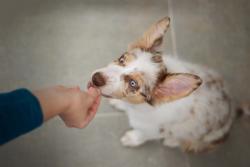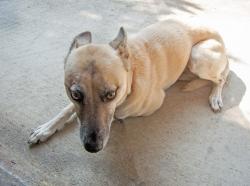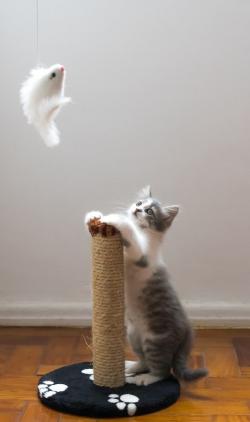For my own personal use only:
Small animal behavior
- Unwanted behaviors are a major cause of pet relinquishment
- In the clinic:
- Perceived stress of visit may prevent owners from seeking care
- Understand behaviors to diminish patient fear and stress, improve safety, and ease client concerns
- Body language is the best way to assess pet behavior: It’s their way of talking
Fear Free™ practice
- Goal: Reduce patient stress and anxiety in the clinic
- Fear Anxiety and Stress (FAS) score: Objective measure of stress level
- Balance Dx/Tx needs against FAS
- FAS:
- See ↑ aggression
- Prevents necessary Dx/Tx
- Causes ↑ HR, RR, body temp, blood pressure, blood glucose; alters CBC parameters
- Can delay healing (cortisol)
- Treats help ↓ FAS and build trust
- Continuous contact w/ pet can ↓ FAS w/ handling
- Examine most sensitive areas last:
- Head/face
- Paws
- Deep palpation of abdomen
- Document response in medical record for future visits
Canine behavior
- Unwanted behaviors are a major cause of pet relinquishment
- Appropriate puppy socialization can help prevent behavior problems in later life
- Puppy socialization period is @ 3 - 16 w
- Brain is most elastic and receptive to learning about:
- Social partners and interactions
- Threat response
- Appropriate response to environment
- Poor socialization can ↑ risk of unwanted fear-based behaviors
- Interpret body language to help prevent bite injuries and improve patient compliance
- Brain is most elastic and receptive to learning about:
- What are signs of FAS?
- Pupils dilated in normal light
- Tail tense, tucked between legs
- Panting, lip licking, yawning
- Holding ears back or down
- Soliciting attention from owner/vet personnel
- Fixed gaze away from or towards threat: Moderate to severe FAS
- What are signs of severe FAS?
- Defensive aggression
- Stiff/frozen
- Lunging, growling, snapping, biting
- Threatening posture
- Hiding
- Avoidance
- If a dog shows these signs you need immediate help
- Stop intervention/handling
- Speak to DVM about medications/next steps
- High risk of bite incident
- Defensive aggression
Unwanted canine behaviors
- Unwanted elimination
- Housetraining
- Have DVM evaluate any previously house-trained dog w/ onset of inappropriate elimination
- May indicate underlying health problem
- Destructive behavior: Chewing, digging/scratching
- Introduce acceptable items for chewing - e.g., toys
- May indicate separation anxiety or other fear-based behavior
- Aggression
- When it is occurring?
- Fear-induced
- Play-related
- Redirected
- When it is occurring?
- Decrease fear-based aggression in clinic w/ positive reinforcement
- Reward w/ treats after each step of exam/procedure
- Understand body language and stop when pet exhibits FAS
Feline behavior
- In cats, inappropriate elimination is the most common undesirable behavior
- Patient compliance does not always indicate a relaxed state; cats with high stress may freeze
- Kitten socialization period is @ 2 - 7 wks
- Normal cat behavior: Tail up, +/- slight curl at tip, ears erect and forward, exploring environment, interacting w/ vet personnel
- Signs of FAS:
- Refusal to get out of carrier
- Tail down and tight to body
- Dilated pupils
- Ears to side or slightly back
- Tail tip twitching
- What are signs of severe FAS?
- Learned helplessness
- Freezing, hiding, escaping
- Hunched posture
- Defensive aggression
- Hissing/growling, vocalization
- Showing teeth
- Striking w/ front paws
- Biting
- Learned helplessness
Feline behavior in the clinic
- Behavioral modification begins at home
- Acclimate cat to carrier several wks before appt
- Create cat-specific waiting/exam/treatment areas
- Use appropriate restraint methods (see part 2)
- Useful info at American Association of Feline Practitioners Cat Friendly Practices®
- In some cases consider sending the patient home for administration of sedatives such as gabapentin prior to a rescheduled visit
Unwanted feline behaviors
- Indoor cats have unique behavioral needs
- Unwanted behaviors can result if not met
- Unwanted elimination
- Most common undesirable behavior
- DVM assessment if a change in habits
- Evaluate for underlying health problem
- Cats have litter type/box preferences
- Destructive behavior
- Scratching
Images courtesy of: Graeme Main, Ayla Verschueren, Ayla Verschueren, Ellen Levy Finch, Sendai Blog, Anya Prygunova, frankieleon, Willian Justen de Vasconcellos.
Top Topic Category
Canine









